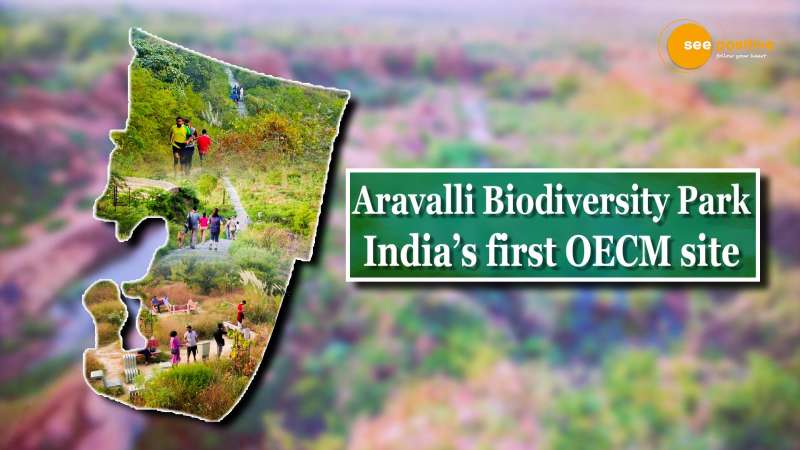

HIGHLIGHTS:
- The Aravalli Biodiversity Park was announced as the first OECM site.
- The International Union for Conservation of Nature (IUCN) provides the OECM tag.
- The OECM areas were established at the 2018 Convention on Biological Diversity.
What is in the News?
February 2, On World Wetlands Day, the Aravalli Biodiversity Park was announced as the first Other Effective Area – based Conservation Measures site, OECM site.
What is the Organization for Economic Cooperation and Development (OECD)?
The International Union for Conservation of Nature (IUCN) provides the OECM tag. According to IUCN, the OECM sites are not protected yet are rich in biodiversity. The Aravalli Hills are the country’s first OECM site. The proposal to make Aravallis as the OECM was made by the National Biodiversity Authority
The Aravalli Biodiversity Park
The park is 390 acres in size. Its vegetation is semi-arid. There are around 43,000 shrubs, 101,000 trees, and 300 indigenous plant species on the island. Previously, the park served as a mining site. Environmentalists, biologists, and ecologists, as well as the local populace, worked tirelessly to turn it into a city forest. The Aravallis are known as Delhi’s green lungs. Leopards, foxes, sambhars, and jackals are among the animals they protect. Delhi gets 7.07 percent of its oxygen from the Aravallis.
Need for the tag
Illegal mining has resulted in the loss of 25% of the Aravallis. According to CAG, there were about 40,000 incidences of unlawful mining. Thirty-one hills have vanished since the 1960s.
The importance of the Aravallis
Between the desert in the west and the rich plains in the east, the Aravallis operate as a barrier. The Aravallis block the monsoon clouds from reaching Nainital and Shimla, bringing rain. The hill serves as a source of groundwater recharge for the area.
Definition of the OECM
The OECM areas were established at the 2018 Convention on Biological Diversity.
The following is the definition of OECM:
Simple lay man terms
“OECM is not a protected region,”. It is governed in order to obtain favorable results. The objectives are biodiversity protection and a focus on cultural, socioeconomic, and spiritual values.”
Definition in Technical Terms
The definition is divided into three sections. Ancillary conservation, secondary conservation, and primary conservation are the three types of conservation. In-situ conservation is provided via ancillary conservation. This includes freshwater conservation zones and war graves that are protected. Active dialogue is a secondary conservation. Creating conservation corridors, for example, is secondary conservation. The term “primary conservation” refers to regions that the government is unwilling to identify as protected areas. Indigenous peoples, religious groups, or private landowners will be the ruling powers.


